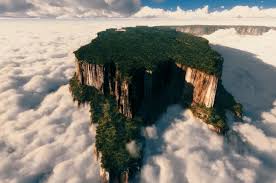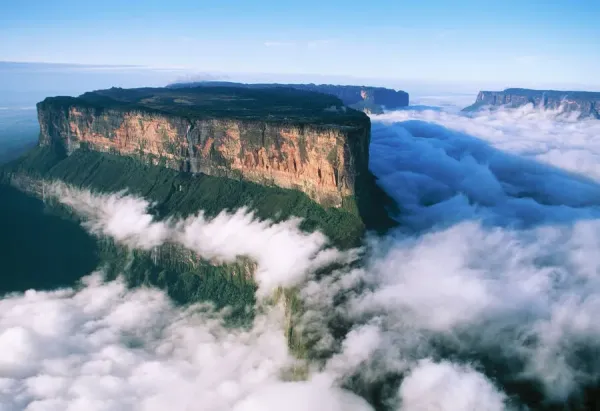Mount Roraima: An Ancient Wonder of the Earth
Mount Roraima truly stands as a remarkable ancient wonder of the Earth. This magnificent tepui, or table-top mountain, is not merely a geological formation but a towering sentinel of time, its flat summit rising dramatically from the surrounding plains where the borders of Venezuela, Brazil, and Guyana meet. Geologists estimate Roraima to be billions of years old, predating the formation of the Atlantic Ocean. Its sheer, almost vertical cliffs, reaching over 400 meters high in places, have protected its unique ecosystem from external influences for millennia, preserving a landscape that feels truly prehistoric.

The summit of Mount Roraima is a world unto itself, a surreal landscape of bizarre rock formations sculpted by wind and rain, interspersed with glistening pools and rare, endemic flora and fauna. Mist frequently shrouds its peaks, adding to its mystical allure and creating an atmosphere akin to a lost world. This isolation has allowed for the evolution of species found nowhere else on Earth, including various carnivorous plants and unique amphibians. Exploring its expansive plateau feels like stepping onto another planet, a testament to its ancient origins and the unparalleled evolutionary journey it has undergone.

Beyond its geological and biological significance, Mount Roraima has captivated human imagination for centuries, inspiring myths, legends, and even literary works, most famously Arthur Conan Doyle’s “The Lost World.” Indigenous Pemon people consider it a sacred place, a spiritual home. For adventurers and scientists alike, Roraima remains a pinnacle of exploration, a living testament to Earth’s ancient past and the incredible power of natural forces to shape such breathtaking and enduring wonders. Its very existence is a profound reminder of the planet’s deep history and the hidden treasures it still holds.
